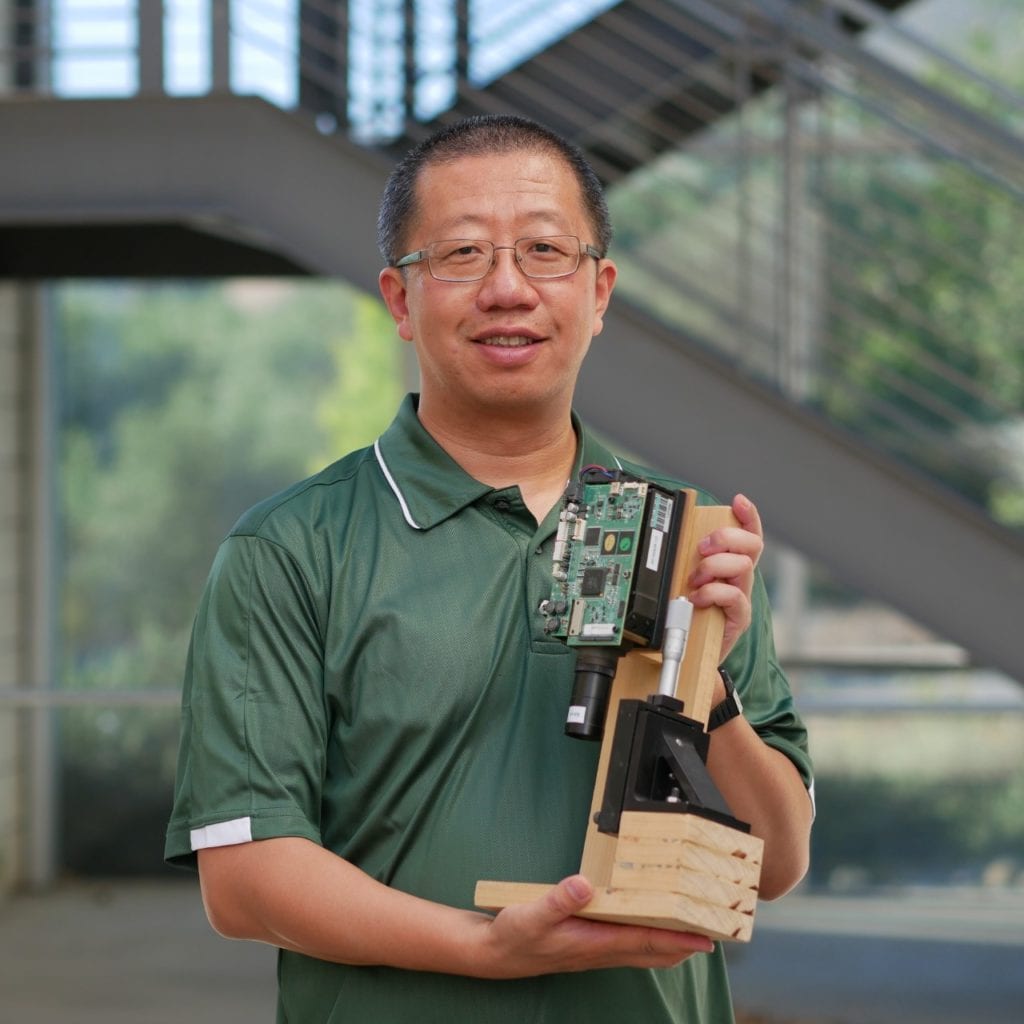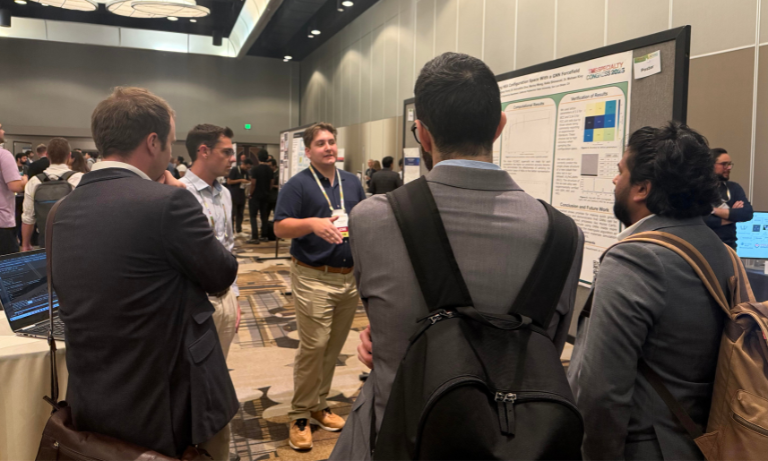In 2016, Xuan Wang was creating Cal Poly logos with a 3D printer when he remembered research he had conducted as a Ph.D. student a decade earlier.
That’s when he realized he could improve on existing methods of fabricating membranes by using ultraviolet light.
“I guess this is the moment of ‘connecting dots’ that Steve Jobs mentioned in his famous speech,” said Wang, an assistant professor in the Industrial and Manufacturing Engineering Department.
Jobs, the co-founder of Apple, once told Stanford University students, “You can’t connect the dots looking forward – you can only connect them looking backwards.”
That looking backward helped Wang earn a patent, titled Porous Nanostructures and Methods of Fabrication, issued by the U.S. Patent and Trademark Office in late May.
The patent represents an innovative way to fabricate membranes and other complex structures, with applications in filtration (including water, chemical and biological), batteries and electronic devices, Wang said.
“Conventionally, these structures, made of ceramics, are done by mechanical methods, such as tape casting,” he said.
But those methods make is difficult to control the uniformity of thickness. Wang’s invention uses an optical method that projects UV light to a mixture of UV sensitive polymer and ceramic powders.
“In this way, the thickness is controlled by the dose of UV light, which has a much better tolerance,” he said. “The porosity of the resultant structure can also be controlled precisely.”
While UV lighting has been used to cure photopolymers since the 60s, Wang said, it hasn’t been used for structural purposes because their properties are weak. That includes not being able to survive in high temperatures. “On the contrary, ceramic, metal, and composite membranes are much stronger to give them the advantage.”
Wang, who plans to apply this method on batteries and water filtration, had previously conducted research on 2D membranes while a doctoral student at UC San Diego. It was there that he began creating patents and trade secrets.
“I always enjoy innovating new things and changing the world,” he said.


